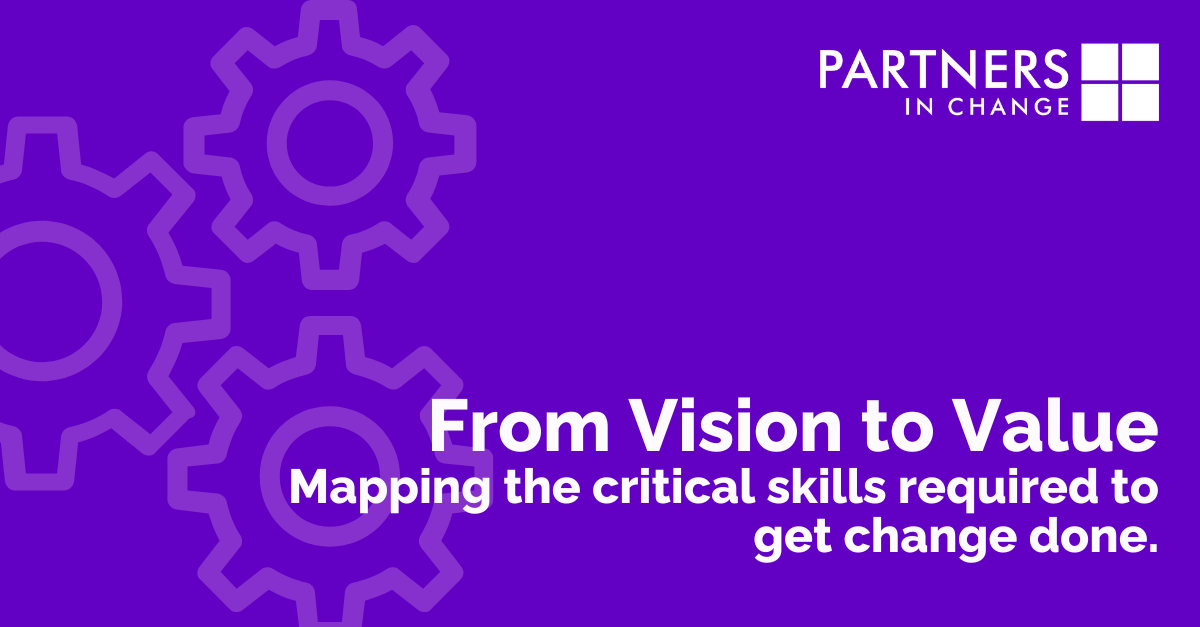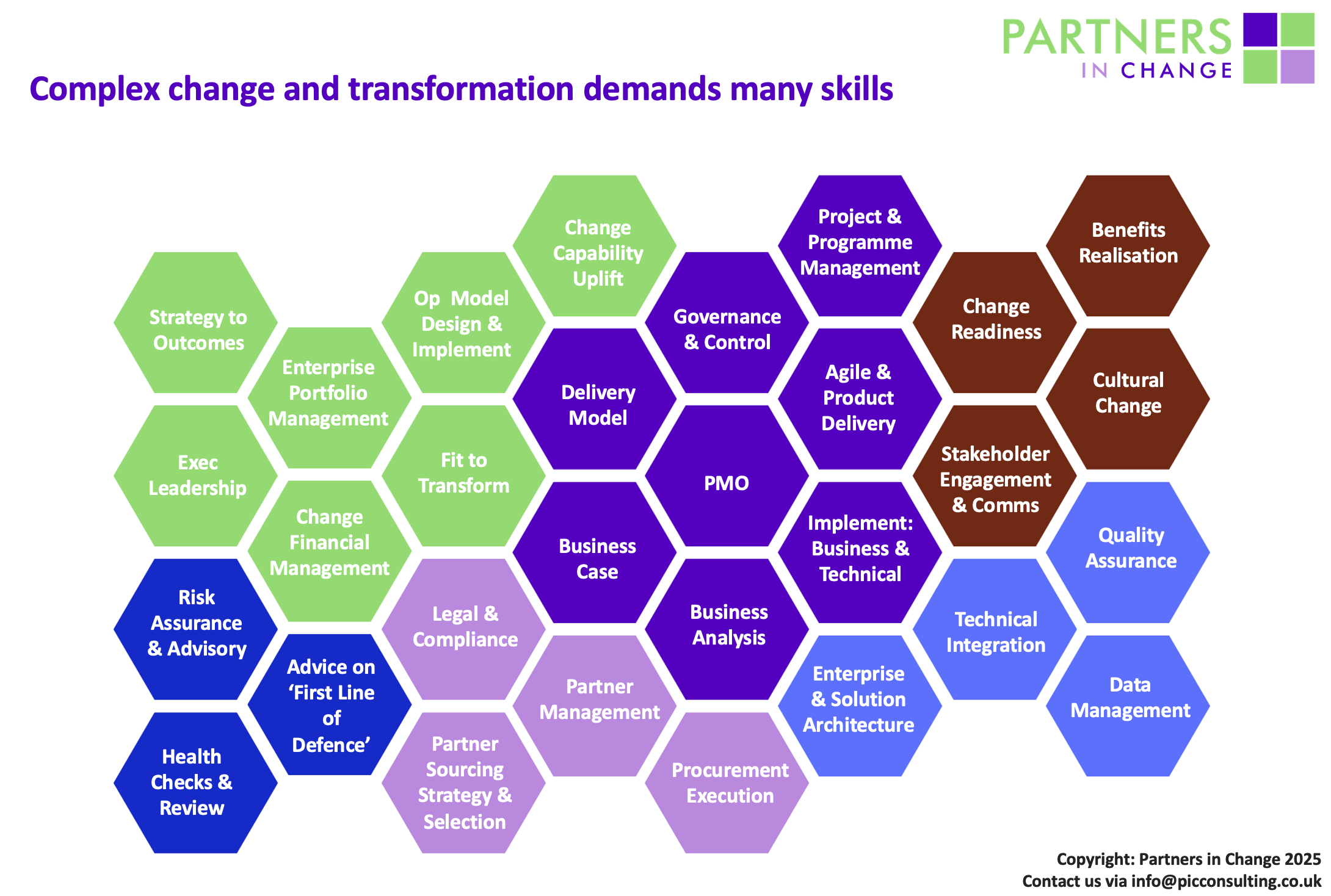From Vision to Value
By Craig Ryder — November 5, 2025

From Vision to Value: – the critical skills every leader must mobilise to get effective change done.
Both the breadth and depth of capability and capacity required to deliver major change are often underestimated. Enthusiasm and hard work are important, but they alone rarely deliver what is demanded.
Whether you upskill your existing team, recruit specialists, or seek consulting resource, understanding the breadth of expertise needed is a crucial, and often ignored, first step.
Complex change activity can sometimes be assumed to be a single initiative. This is never the case; effective and efficient change and transformation demand a portfolio of interconnected capabilities, each requiring specialist skills, experience, and above all, coordination.
When this complexity is overlooked, organisational change frequently stalls. Familiar mistakes are repeated, programmes lose pace, or gradually erode through the declining goodwill of those affected. In contrast, change programmes that succeed understand that complex change is a systemic challenge. It requires multiple disciplines, orchestrated in parallel, all working collaboratively towards the same outcome.

Beyond a Narrow View
When facing change, there is often a tendency to look inward, focusing on existing processes, structures, and culture. However, the sheer pace and relentless nature of change today demand a different starting point.
Rather than approaching transformation from a single perspective, leaders must begin with a clear, high-level view of the many elements required for effective delivery. A wide-ranging, holistic ‘map’ can help identify blind spots and ensure that the right conversations happen early, allowing momentum to be maintained.
A Framework for Change Leaders
At Partners in Change, we have developed a practical framework that is designed to help leaders highlight the common components required to deliver effective change.
We have found it to be a useful tool to help communicate the complexity of the road ahead and to guide effective planning from the outset, before choices are made, resources are committed, and money spent.
This framework shouldn’t be considered a definitive template. Every organisation is different, with its own existing kit bag of capabilities, experience, culture, and ambitions. But experience tells us that, for most change challenges most of the time, the elements depicted in the diagram below are a reliable place to star
Why This View Matters
Our customers have found this high-level perspective useful at several levels:
- Educating stakeholders – It illustrates the sheer breadth of skills involved, especially for those less familiar with major change and transformation challenges.
- Focusing resourcing conversations – It helps clarify what capabilities already exist in the organisation, where upskilling may be required, and where external expertise should be brought in.
- Supporting decision-making – It enables leaders to prioritise wisely, sequencing activities and investments for maximum impact.
By making the challenge visible, leaders can engage stakeholders more effectively and build alignment early—long before the hard yards of delivery begin.
The Capabilities That Matter
We identify a total of 30 capability components as illustrated by the ‘hexagon’ diagram above. This diagram is arranged to show a logical left to right sequence across the life of a typical change programme, with skills grouped into six general components, colour coded as described below:
- Business Direction and Oversight (Green hexagons)
This group of skills ensures your change activity has strategic clarity, compelling purpose, a universal narrative, and leadership alignment.
- Assurance and Advisory (Dark Blue hexagons)
Provides the insight, oversight, and trusted guidance that ensure change activity stays on course—delivering confidence, clarity, and lasting impact.
- Delivery Execution (Purple hexagons)
Orchestrates day to day change activities by applying structured oversight through programme management excellence. All activities are sequenced, with interdependencies managed effectively across the programme lifecycle.
- Third Party Engagement and Compliance (Lilac hexagons)
Helps the selection of, contracting with, and management of the key partners whose products and services are vital components of your change plans.
- Landing the Change (Burgundy hexagons)
Prepares your people (and third parties) for upcoming changes, enabling positive adoption such that new ways of working are embraced and sustained.
- Technical Delivery (Light Blue hexagons)
Ensures the seamless execution of the systems, tools, and technologies required to underpin your change plans.
This article sets out to show that no single capability guarantees success when it comes to getting efficient and effective change done. But, when the skills outlined above are deployed in the right sequence and are integrated, adapted and orchestrated to fit the organisation’s context, they create the conditions where change can be planned, shaped and delivered with confidence.



Recent Posts